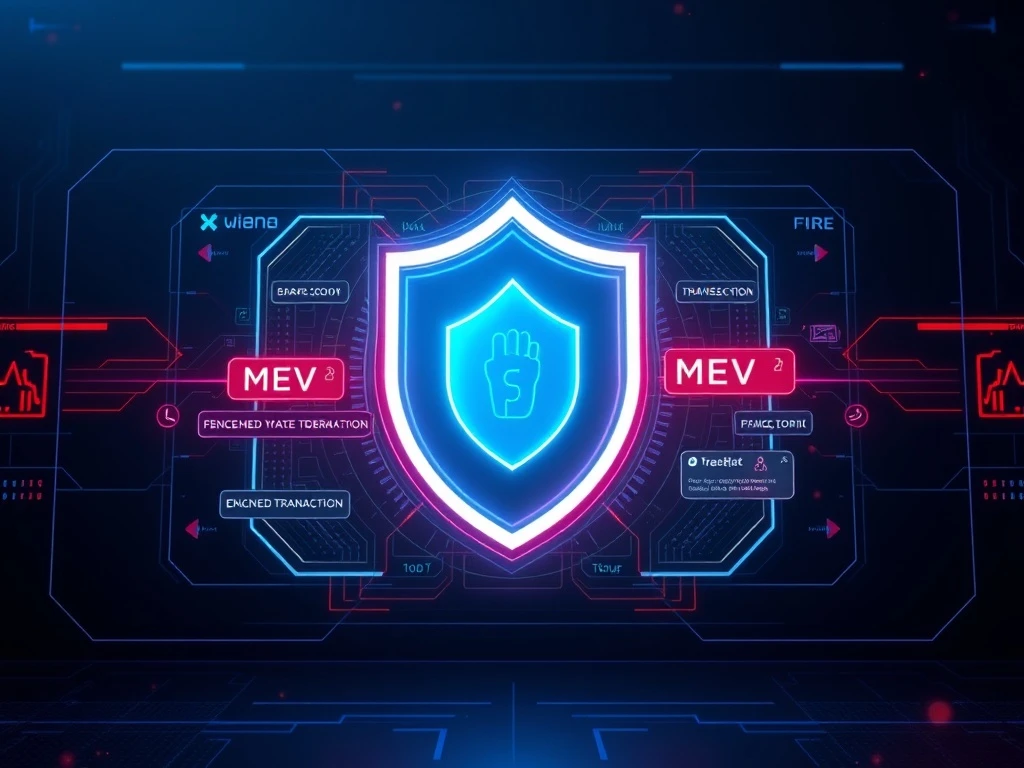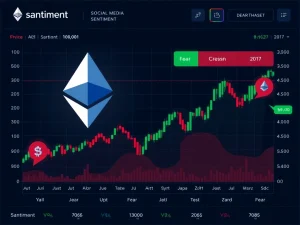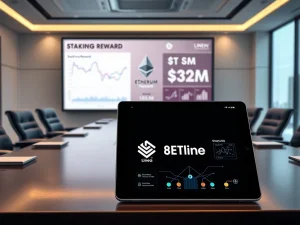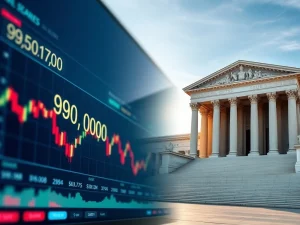Uniswap Angstrom: A Revolutionary Shield Against MEV for Traders

The world of decentralized finance (DeFi) has promised a fairer, more transparent financial system. Yet, a hidden cost has plagued traders: Maximal Extractable Value (MEV). This silent tax, often invisible to the casual observer, has siphoned profits and eroded trust. But what if there was a powerful new defense? Enter Uniswap Angstrom, a groundbreaking decentralized exchange (DEX) designed to tackle MEV head-on, offering a revolutionary shield for every trader in the volatile crypto markets.
Unveiling Uniswap Angstrom: A New Era for DeFi Trading
On Friday, July 25, 2025, the Uniswap Foundation officially launched Angstrom, a significant step forward in their commitment to a more equitable and efficient DeFi landscape. This isn’t just another DEX; it’s a meticulously crafted platform engineered specifically to mitigate the pervasive risks of MEV. For years, block producers and bots have exploited transaction ordering through tactics like front-running and sandwich attacks, distorting execution prices and eating into user gains. Angstrom aims to put an end to this by integrating advanced mechanisms that prioritize user fairness and security, fostering a healthier DeFi ecosystem for all participants.
Decoding MEV Protection: Why It Matters to You
So, what exactly is MEV, and why is MEV protection crucial for your trading? Imagine placing a buy order for a token, only for a bot to see your pending transaction, execute its own buy order just before yours, and then sell it back to you at a higher price. This is a simplified example of a sandwich attack, a common form of MEV. These sophisticated strategies allow certain actors to extract value by manipulating the order of transactions within a block. For retail traders, this translates to:
- Higher Slippage: Your trade might execute at a worse price than anticipated.
- Reduced Profits: The value extracted by MEV effectively acts as a hidden tax on your trades.
- Loss of Trust: The feeling that the system is rigged against you can deter participation in DeFi.
Angstrom directly addresses these issues, aiming to level the playing field and restore confidence in decentralized trading.
The Power of Private Order Flow and Batch Auctions
Angstrom’s innovative architecture relies on a combination of cutting-edge techniques to obscure trades from predatory actors. Two of its most prominent features are private order flow and batch auctions:
Private Order Flow: Instead of routing trades through public mempools where bots can easily snoop on pending transactions, Angstrom directs orders directly to block builders via encrypted channels. This bypasses the public visibility that MEV bots exploit, significantly reducing opportunities for front-running or other manipulative tactics. Your trade intentions remain private until they are confirmed, giving you a fairer shot at your desired execution price.
Batch Auctions: This mechanism aggregates multiple orders over a specific time period and settles them simultaneously. By doing so, it reduces the opportunities for reordering or front-running individual transactions. Instead of a first-come, first-served public queue, trades are grouped and processed together, making it much harder for malicious actors to gain an advantage based on transaction sequencing. Additionally, Angstrom incorporates threshold encryption, which further shields transaction details. This means transaction data remains encrypted until a predefined number of participants collectively decrypt them, preventing premature manipulation and ensuring a secure trading environment.
Building a Fairer DeFi Ecosystem: Beyond Individual Gains
The benefits of Angstrom’s MEV protection extend far beyond just individual traders. By curbing practices that favor high-frequency bots and large institutional players, Angstrom inherently strengthens decentralization within the DeFi space. When block producers can’t easily extract MEV, the incentives for centralization tied to block production diminish. This leads to:
- Enhanced Trust: Users can have greater confidence that their trades are executed fairly.
- Improved Price Execution: Reduced slippage and more predictable outcomes.
- Increased Profitability: More of your gains stay in your pocket.
- Greater Resilience: The broader DeFi ecosystem becomes more robust against manipulative practices.
The Uniswap Foundation’s strategic move to launch Angstrom underscores a growing industry recognition that addressing MEV is not just a feature, but a fundamental necessity for DeFi’s long-term viability and mainstream adoption. Their role as a neutral steward of the Uniswap protocol lends significant legitimacy to this initiative, channeling vital resources into research and development aimed at sustainable growth and user protection.
Navigating the Future: Challenges and Opportunities for Uniswap Angstrom
While Angstrom presents a compelling vision for fair trading, its path to widespread adoption isn’t without hurdles. The platform faces challenges such as the critical need for rapid liquidity adoption. A DEX, no matter how innovative, relies heavily on sufficient liquidity to offer competitive pricing and efficient trades. Technical hurdles in balancing robust security with optimal transaction efficiency will also be an ongoing consideration. Furthermore, the dynamic nature of MEV strategies means that Angstrom’s safeguards will necessitate continuous updates and evolution to stay ahead of sophisticated attackers. The success of Uniswap Angstrom hinges significantly on user adoption and the adaptability of its MEV defenses in an ever-changing landscape.
Despite these challenges, the opportunities are immense. Platforms that prioritize transparency, fairness, and robust MEV protection—like Angstrom—could redefine trading dynamics, encouraging broader participation from both retail and institutional players. This pivotal step by the Uniswap Foundation offers traders a tangible, more equitable alternative to MEV-exposed platforms, paving the way for a truly decentralized and fair financial future.
Frequently Asked Questions (FAQs)
Q1: What is Uniswap Angstrom?
A1: Uniswap Angstrom is a new decentralized exchange (DEX) launched by the Uniswap Foundation. Its primary purpose is to combat Maximal Extractable Value (MEV) by providing a fairer and more secure trading environment for users.
Q2: How does Angstrom combat MEV?
A2: Angstrom employs several advanced mechanisms, including private order flow, which routes trades directly to block builders via encrypted channels, and batch auctions, which aggregate and settle orders simultaneously. It also uses threshold encryption to shield transaction details, all designed to limit visibility and manipulation by predatory bots.
Q3: Who benefits from Angstrom’s MEV protection?
A3: Primarily, retail traders benefit from improved price execution, reduced slippage, and increased profitability. The broader DeFi ecosystem also benefits from enhanced decentralization, increased trust, and greater resilience against centralization incentives tied to block production.
Q4: What are the main challenges for Angstrom’s success?
A4: Key challenges include the need for rapid liquidity adoption to ensure competitive trading, technical hurdles in balancing security with transaction efficiency, and the ongoing necessity to adapt its MEV defenses as predatory strategies evolve.
Q5: Is Angstrom part of the main Uniswap protocol?
A5: Angstrom is an initiative launched by the Uniswap Foundation, which is dedicated to supporting the Uniswap protocol and its ecosystem. While it leverages the broader Uniswap infrastructure, it’s a distinct platform focused specifically on MEV mitigation.
Q6: When was Angstrom officially launched?
A6: Uniswap Angstrom was officially launched on Friday, July 25, 2025.









